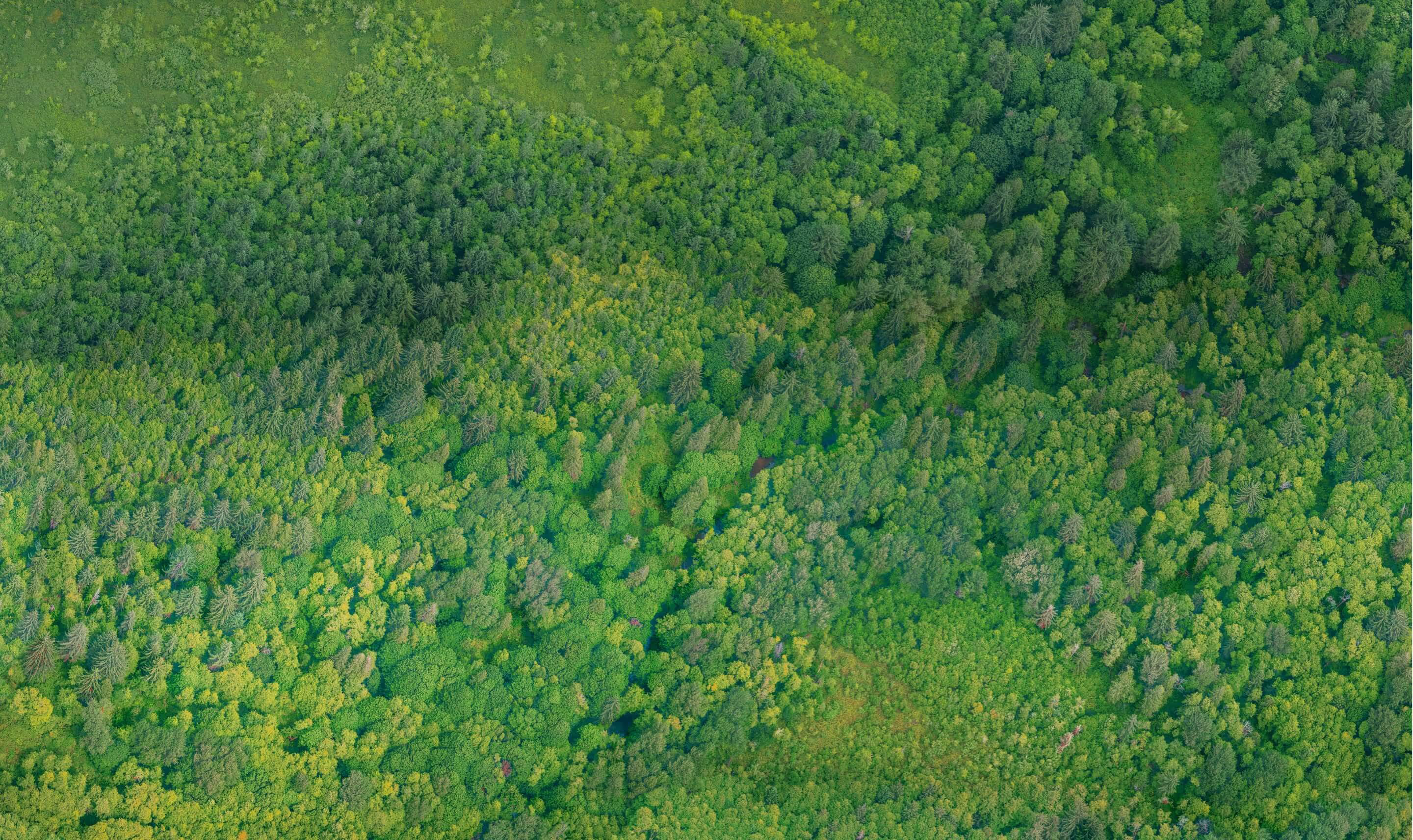Reforestation: What do 6 forest and tree experts think?
.avif)
The climate crisis is intensifying and global ecosystems are under unprecedented pressure. Wouldn't reforestation be a powerful solution to restore environmental balance? And if so, how do you go about making it effective? What are the best practices?
To see more clearly, we offer you a series of interviews on the subject. Experts in forests, trees, biodiversity and ecological restoration share their knowledge and expertise there. They give us an in-depth look at the ecological, economic, and social benefits that reforestation brings. The challenges we are facing will also be highlighted!
So, let yourself be guided through exciting discussions that explore the multiple facets of this crucial environmental action and the ways in which it can shape a more sustainable future for generations to come.
To start this series, we interviewed David Happe.
David Happe is an arboricultural expert. He is also a member of the French Arboriculture Society and the ARBRES association. A naturalist author, he has written numerous books on trees including “Trees in peril” (Tree Prize 2021) at Editions Le Mot & le Reste. Her next book, “Guardians of Nature”, will be published next April by Le Pommier editions.
1. Why are reforestation programs essential today? What challenges do they respond to?
It's all a question of the scale of analysis:
In metropolitan France
Forests cover an area of nearly 17 million hectares — a third of that of the country — and it has never been so large in more than four centuries. Reforestation operations must therefore meet specific needs related to the renewal of plots decimated, for example by pests. Elsewhere, as much as possible, it is appropriate to renew through natural regeneration, except when the pre-existing species is no longer adapted to the environment in view of climate change. As for first-generation afforestations, they are useful to preserve, for example, protected areas and water catchments or to enable the recovery of biodiversity in areas exposed to strong pressure linked to the development of intensive agriculture, for example.
At the global level
The situation here is different. Forest areas have declined by more than one hundred million hectares in twenty years (twice the size of France!). And the scientific community predicts that half of the 3 trillion trees on Earth could disappear by the end of the century if strong measures are not taken to stop the decline of the world's forest. In many regions of the planet, the situation is very worrying and it is essential to reforest massively to fight against soil erosion, fight against climate change... But above all, the most important thing is to preserve existing forests, because no plantation can replace the ecological quality of native forests.

2. What are the fundamental good practices to follow to ensure the success of a reforestation project?
For afforestation or reforestation, rule No. 1 to respect is to plant the right tree in the right place. It is therefore necessary to select species adapted to the environment (soil, climate, topography...) of today, but also of tomorrow. Indeed, climate changes — over the next 50 or 100 years — will have a strong impact on the environments in which trees will have to grow. In mainland France, for example, we know that certain species that are very present in our forests — such as beech — will regress considerably by 2100 due to their inadaptation to climate change. It is important to take these developments into account as well.
3. Why is the massive planting of trees a bad solution to fight climate change?
It all depends on what is meant by mass planting. Are we talking about planting density or planted area? Currently, the “fashion” is for the development of very dense plantations of trees and shrubs in small areas, what is referred to as micro-forests. In mainland France and more widely in Europe, I think that in the majority of cases, this type of project is very expensive and gives results that do not match the investments made. It seems more useful to me to mobilize these investments for other more relevant vegetation projects.
As for massive planting in terms of area, I do not have a definite opinion on this issue. It all depends on the local context.
4. What roles do native species play in reforestation projects?
Their roles are essential, because many species — fungal, vegetable, animal — only thrive in afforestations composed of native species. In my first book, “Trees at Risk”, I cite for example the crucial ecological role of cedar groves in Morocco, which are home to around thirty nesting birds, which is one of the country's forest ecosystems with the highest concentration of avian species.

5. What role do local communities play in the long-term success of reforestation projects, and what are the most effective approaches to engaging them?
I think that at the global level, the involvement of local communities is really a guarantee of the success of projects!
The best known project, and certainly the most impressive, is the one that was able to carry out Wangari Maathai in Kenya via the Green Belt Movement. This NGO founded by her in 1977 is still very active. It mobilizes women from more than 4000 villages in a tree planting program around cities and villages. Its aim is to fight against deforestation, ensure their wood resource, regain land fertility, stop soil erosion and generate income. This collaboration between the local population and the NGO has allowed the production of around ten million forest plants. Over 51 million trees have been planted in less than 50 years. In addition, 30,000 women have been trained in activities that guarantee them additional income while maintaining their land and resources.
6. What are the lessons learned from failures or challenges encountered in reforestation projects, and how can they be used to improve future approaches?
The importance of varying strategies
I don't necessarily have a global vision of these projects to learn from them. Simply, I would like to emphasize the importance of varying strategies to fight against plantation failures — in the long term — in the face of climate change. In forest school, we were taught “peasant common sense” which consists in “not putting all your eggs in the same basket”. I totally agree with this approach. It is certainly necessary to plant “new species” that come from other drier and hotter regions in order to anticipate the local effects of climate change. But care must also be taken not to “pull a cross” on the species naturally present on the territory. Within the local populations of these tree species, there is most often a high degree of genetic variability and it is often possible to select individuals who have a better capacity to resist the droughts and the water stress that these induce in plants.
In addition, the quality of the plantation is essential for the success of a project. More than quantity, quality must prevail to ensure long-term success.
The importance of plantations in urban areas
Finally, we must also keep in mind the importance of plantations in urban areas, whether in Europe or elsewhere in the world. The population is increasingly urban and cities need to be made much more resilient to climate change. And this is all the more so as episodes of high heat are exacerbated in the city. However, a recent scientific study [1] has shown that on a global scale, nearly two-thirds of the species planted in 164 cities in 78 countries are now unadapted to the climate expected in 2050. In New Delhi or Singapore, almost all species planted in cities are unsuited to the future climate.
7. Can you tell us a few words about agroforestry, its benefits?
All over the world, agroforestry is a way forward. In many regions of the world strongly impacted by global changes, it is the best guarantee of maintaining soil fertility and restoring biodiversity in agricultural areas.

Do you want to take action for the environment? Do you want to contribute to the protection of the forest, biodiversity, and the sustainable management of resources, land and water?
Join our Sapousse campaign. Our plantation projects fight against deforestation, contribute to the restoration of biodiversity, while providing local populations with a means of subsistence.
[1] Esperon-Rodriguez, M., Tjoelker, M.G., Lenoir, J. et al. Climate change increases global risk to urban forests. Nat. Air conditioning. Chang. 12, 950—955 (2022).



.avif)




.avif)
.png)